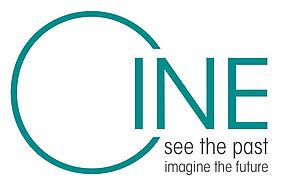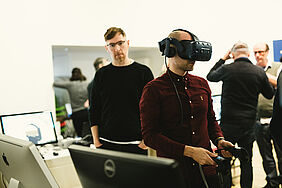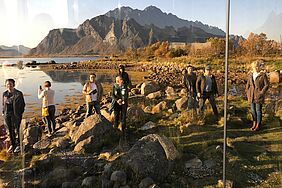Between 2017-2020, CINE (Connected Culture and Natural Heritage in a Northern Environment) was a collaborative digital heritage project between 9 partners and 10 associated partners from Norway, Iceland, Ireland, Northern Ireland, and Scotland. Over the course of 3 years, it transformed people’s experiences of outdoor heritage sites through technology, building on the idea of “museums without walls”.
New digital interfaces such as augmented reality, virtual world technology, and easy to use apps brought the past to life, allowed people to visualise the effects of the changing environment on heritage sites, and helped them to imagine possible futures. “We were all delighted to see the digital model of Helmsdale 1890. It brought back many memories about peoples’ ancestors and where they lived and worked. Some of the houses in the model have now been demolished, and it’s a way of remembering. It’s become a useful resource for our genealogy group, visitors, and the local community,” says Maggie Adamson, Chairperson, Helmsdale Heritage Group.
The project took partners outside into the landscape, where they developed heritage mapping techniques, apps, and games for the public, and created future climate change scenarios to visualise the impacts of the crisis. They interpreted and disseminated what they found in the landscape in innovative, virtual models.
“Making the past and the future visible has a big impact on people,” explains Anna Insa Vermehren, Project Manager of CINE, “as it provides an immediate understanding of a place and of the consequences of natural changes and human behaviour. CINE made a real difference to audiences in remote locations, especially during COVID-19 lockdowns. It was as if the partnership had prepared for the pandemic, as our models and tools were ready to use.”
Check CINE's overview of tools and achievements here.
Plenty of tools are now available
Behind the scenes, CINE developed content management toolkits, enabling curators, archivists, historians, individuals, and communities to develop innovative heritage projects to create unique on-site and off-site visitor experiences in specific locations. Asta Hermannsdottir is a project manager at The Cultural Heritage Agency of Iceland, an associated partner in CINE. She has participated in a workshop on co-production and has been involved in the development of an app for the public to collect information and geo-locate heritage sites. “For some time, we've wanted to build an app that could help the agency with: a) monitoring of cultural heritage sites, e.g. in connection with erosion, b) building a stronger relationship with the public, and tap into the enthusiasm and knowledge of interested parties. Muninn does exactly this and we are very pleased to see the app materialise and are looking forward to working with it. With Muninn we can exploit current technologies to help us with our role in protecting the heritage.”
On an organisational level, CINE provided the partnership with learning on many levels. Stepping out of the traditional museum context and embracing the field of digital innovation enabled partners to become a player in the emerging field of Digital Heritage. The Gunnar Gunnarsson Institute started teaching a Master’s course in digital heritage and gamification at the University of Iceland.
Looking ahead
“CINE was an exciting journey for all involved,” says Anna, “We can already see that the project is living on in new projects and configurations of our partnership.” Looking to the future, “digital technology is moving on rapidly. When CINE started, 'digital' and 'heritage' were two separate fields. Now, digital has become an integral part of sectoral work. We will look back at CINE in some years and might laugh about the small steps we made. Our work will have become part of the professional mainstream. We will be proud that we have contributed to this development.”



